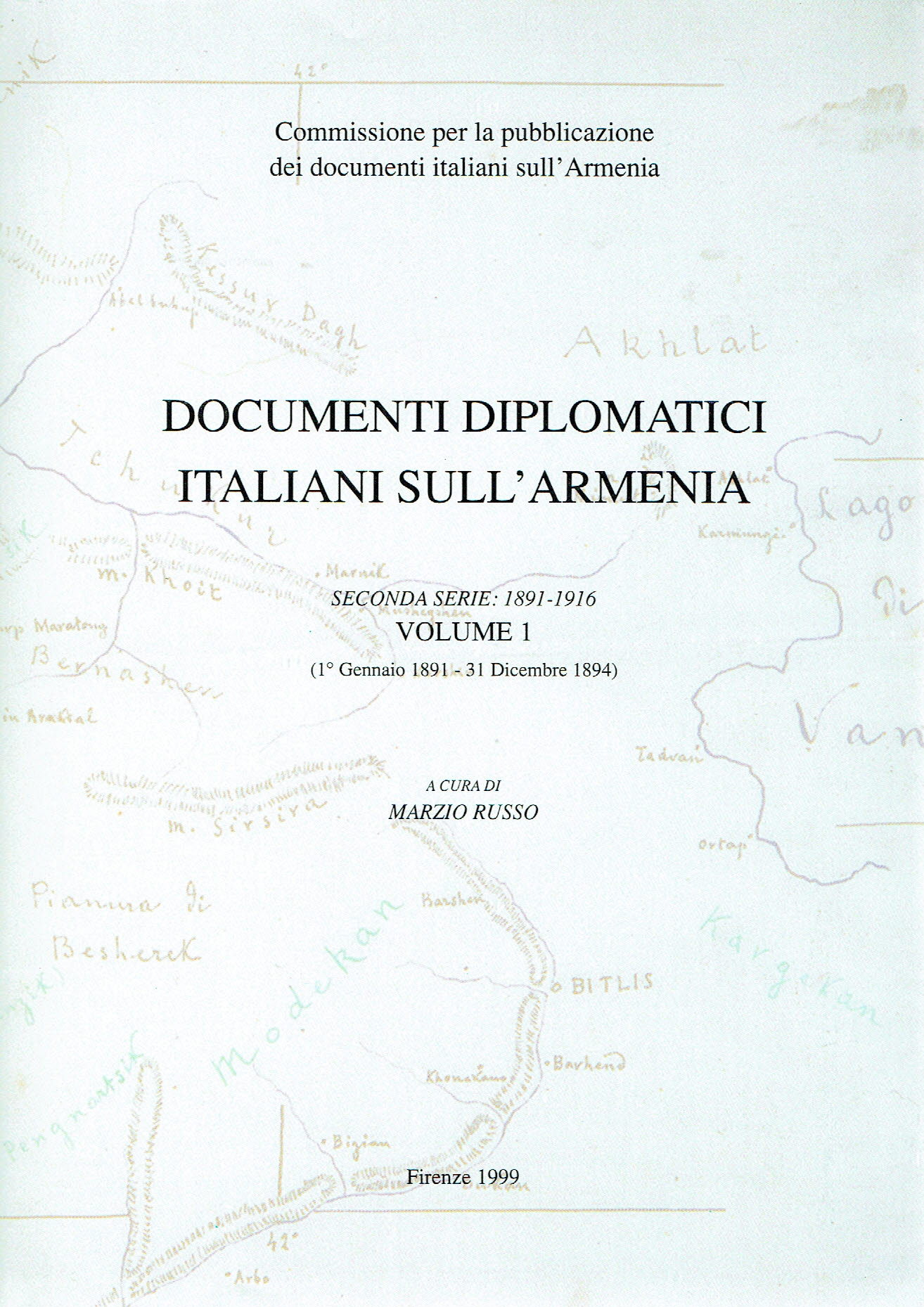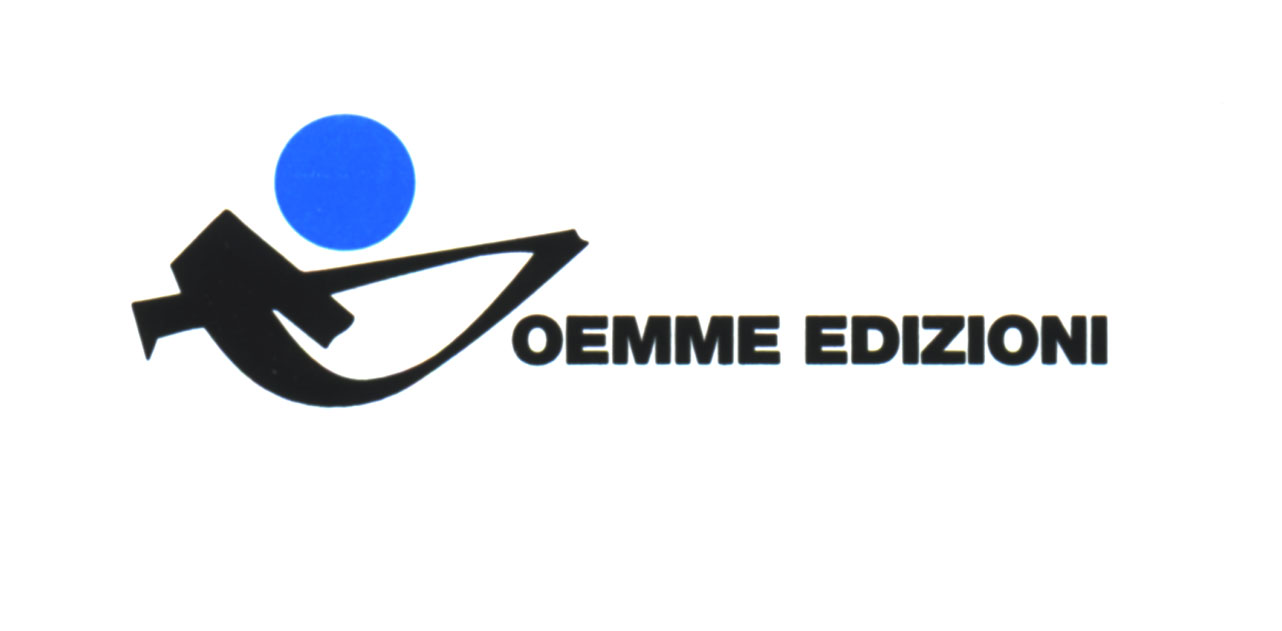Documenti Diplomatici Italiani sull’Armenia
La questione armena è uno dei maggiori problemi che stanno al centro della “questione d’Oriente”, vale a dire del rapporto diplomatico e politico tra le grandi potenze europee e l’Impero ottomano nel periodo compreso tra la fine dell’Ottocento e la prima guerra mondiale, o meglio tra il congresso di Berlino del 1878 e i trattati di pace che conclusero la grande guerra nel 1923. Fu infatti a Berlino, e poco prima a Santo Stefano, che la situazione degli armeni delle provincie orientali dell’Anatolia fu sottoposta all’attenzione della diplomazia europea, ottenendo un primo riconoscimento della sua gravità, e fu a Sèvres, nel 1920, che gli armeni videro riconosciuto il loro diritto ad avere un proprio stato nella regione: una repubblica armena che, però, fu cancellata nel successivo trattato di Losanna.
In questo intervallo, gli armeni furono oggetto di una serie di stragi, di cui le più dure furono compiute negli anni 1894-1896, nel 1909 e nel 1915. Questi eventi, che commossero l’opinione pubblica europea, sono noti da tempo e hanno formato oggetto di pamphlet, di opere memorialistiche, di trattazioni di carattere generale e monografico e di raccolte di documenti. In molti casi, tuttavia, il tono di questi lavori è polemico, infarcito di accuse e di contro accuse da parte delle vittime e degli aguzzini, e spesso non trova riscontro in un apparato documentario scientifico. Ciò si spiega non solo per le “passioni” che l’argomento ha suscitato e continua a suscitare, ma anche per il fatto che molti archivi o non sono mai stati aperti agli studiosi indipendenti o non sono stati esplorati con attenzione e pazienza nella loro interezza.
Con questa opera, la Commissione per la pubblicazione dei documenti diplomatici italiani sull’Armenia si propone di colmare una lacuna, almeno per quanto concerne la documentazione conservata presso l’Archivio storico diplomatico del Ministero degli Esteri italiano. L’opera intende coprire tutto l’arco di tempo compreso tra il 1878 e il 1923, attraverso la pubblicazione di tre serie di volumi. La prima serie, composta di tre volumi, si riferisce agli anni 1878-1890; la seconda, che comprende sei volumi, riguarda gli anni 1891-1911; la terza serie, articolata in quattro volumi, documenta gli anni 1912-1923. I documenti pubblicati sono, nella misura del possibile, tutti quelli conservati in archivio e quindi, non solo i documenti che per il loro carattere generale servono allo studio della politica estera italiana o all’analisi dei rapporti diplomatici tra le grandi potenze dell’epoca, ma anche, e soprattutto, quelli che concernono più da vicino la questione armena.
I testi dei documenti sono riportati nella loro integrità, con piccoli interventi di carattere redazionale che hanno l’unico scopo di “modernizzare” la grafia di alcune parole, evitando un eccessivo numero di sic, o di diminuire l’uso smodato delle maiuscole di moda a fine Ottocento. I nomi delle persone e dei luoghi – armeni, kurdi e turchi – citati nei documenti sono conservati nelle traslitterazioni originali, che spesso, purtroppo, sono ben lontane da una traslitterazione scientificamente accettabile. La cura di ciascun volume è affidata a giovani studiosi che ne firmano la prefazione.
Ennio Di Nolfo
Documenti Diplomatici Italiani sull’Armenia Italian Diplomatic Documents on Armenia
Volume 1 | seconda serie: 1891-1911
(1° Gennaio/January 1, 1891 – 31 Dic./December 31, 1894) | a cura di/edited by: Marzio Russo | Firenze 1999 | pp. 275 | prezzo/price: €46,50
Volume 2 | seconda serie: 1891-1911
(1° Gennaio/January 1 – 31 Agosto/August 31, 1895) | a cura di/edited by: Laura Luminari | Firenze 1999 | pp. 525 | prezzo/price: €62,00
Volume 3 | seconda serie: 1891-1911
(1° Settembre/Spetember 1 – 31 Dicembre/December 31, 1895) | a cura di/edited by: Lorenzo Mechi | Firenze 2000 | pp. 517 | prezzo/price: €62,00
Volume 4 | seconda serie: 1891-1911
(1° Gennaio/January 1 – 31 Luglio/July 31, 1896) | a cura di/edited by: Salvatore Speziale | Firenze 2003 | pp. 403 | prezzo/price: €62,00
Volume 5 | seconda serie: 1891-1911
(1° Agosto/August 1, 1896 – 31 Dicembre/December 31, 1899) | a cura di/edited by: Marco Bais | Firenze 2005 | pp. 391 | prezzo/price: €62,00 | ISBN 88-85822-31-2
Volume 6 [ Tomo 1 e 2 ] | seconda serie: 1891-1911
(22 Ottobre/Oct. 22, 1899 – 18 Settembre/September 18, 1911) | a cura di/edited by: Hilmar Kaiser e Massimo Sciarretta | Firenze 2010 | pp. 635 | prezzo/price: €89,00 | ISBN 978-88-85822-35-1
Volume 7 | Terza serie: 1912-1923
(1 Gennaio/January 1, 1912 – 31 Dicembre/December 31, 1917) | a cura di/edited by: Lorenzo Medici | Firenze 2015 | pp. 421 | prezzo/price: €62,00 | ISBN 978-88-85822-38-2
Volume 8 | Terza serie: 1912-1923
(1 Gennaio/January 1, 1918 – 31 Dicembre/December 31, 1919) | a cura di/edited by: Daniela Melfa | Firenze 2013 | pp. 518 | prezzo/price: €62,00 | ISBN 88-85822-41-2
Volume 9 | Terza serie: 1912-1923
(1 Gennaio/January 1, 1920 – 31 Dicembre/December 31, 1920) | a cura di/edited by: Matteo Gerlini | Firenze 2015 | pp. 187 | prezzo/price: €62,00 | ISBN 978-88-85822-68-9
Dorsoduro 1602 | I-30123 VENEZIA | Tel. +39 041 5224225 E-mail: segreteria@centrostudiarmeni.it
Italian Diplomatic Documents on Armenia
The Armenian Question was one of the major issues within the “Eastern Question”, i.e. the diplomatic and political relations between the European Powers and the Ottoman Empire in the years between the end of the Nineteenth Century and the First World War, that is between the Congress of Berlin in 1878 and the peace treaties which put an end to the war in 1923. In Berlin, and a few months earlier at Santo Stefano, the plight of the Armenians in the Eastern provinces of Anatolia was first brought to the attention of the European diplomats, and was recognized as being extremely serious; at Sèvres, in 1920, came the first official recognition that the Armenians had a right to their own state in the area: an Armenian Republic which, however, was removed from the subsequent treaty of Lausanne.
Between these dates, the Armenians suffered several massacres, of which the worst were carried out in 1894-96, in 1909 and in 1915. These events, which had a profound effect on European and American public opinion, are well known and have been described in pamphlets, memoirs, general histories and monographs, as well as collected editions of documents. However, in many cases, many of those publications are highly polemical, full of accusations and counter-accusations by both the victims and their persecutors, and often not supported by a body of scientific proof. This can be explained not only by the “passions” the subject has aroused and continues to arouse, but also by the fact that many archives have either been denied to independent scholars or were never examined systematically in their entirety.
The Committee for the Publication of Italian Diplomatic Documents on Armenia hopes to fill a gap with these volumes, that is as far as the documentation at the Historical Diplomatic Archive of the Italian Foreign Ministry is concerned. These volumes will cover the entire period between 1878 and 1923 in three series of volumes. The first series, comprising three volumes, refers to the years 1878-1890; the second series, which consists of six volumes, deals with the years 1891-1911; the third series, divided into four volumes, covers the years 1912-1923. As far as possible, all the documents published by us are those held in archives an hence, not only can they help scholars who deal with Italian foreign policy or with diplomatic relations between the great powers of the period, but above all they are useful to those most directly concerned with the Armenian Question.
The texts of the documents are reproduced in their entirety, with minimum editorial comment intended solely to “modernize” the spelling of some words and thus avoid the overuse of sic, or the excessive use of capitals, so much in fashion at the end of the Nineteenth Century. The names of people and places – whether Armenian, Kurdish or Turkish – mentioned in the documents are kept in the original transliteration, which unfortunately is often very different from an acceptable scientific transliteration. Each volume has been edited by young scholars whose signature appears in the relevant preface.
Ennio Di Nolfo

